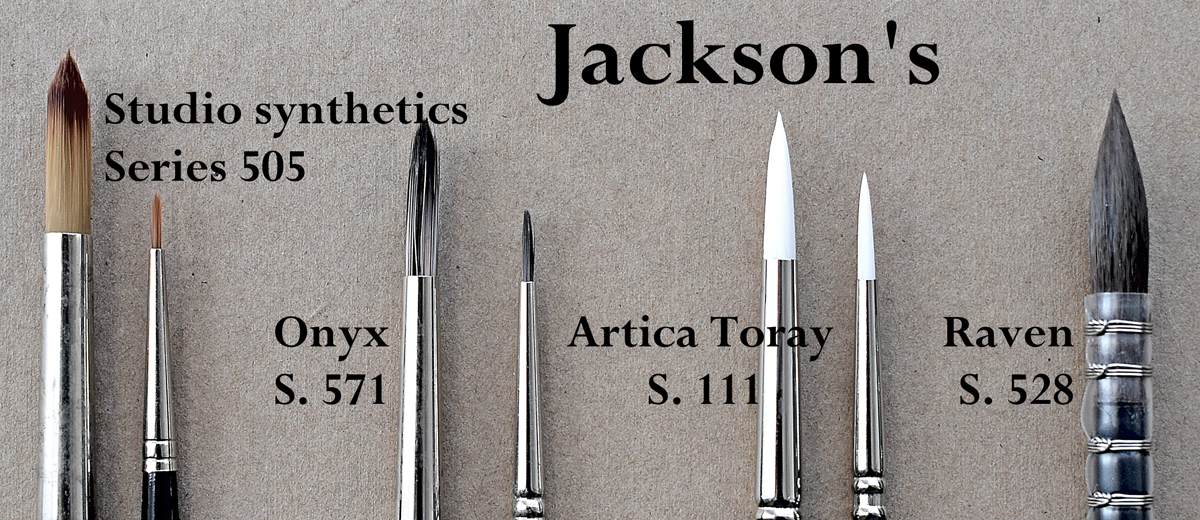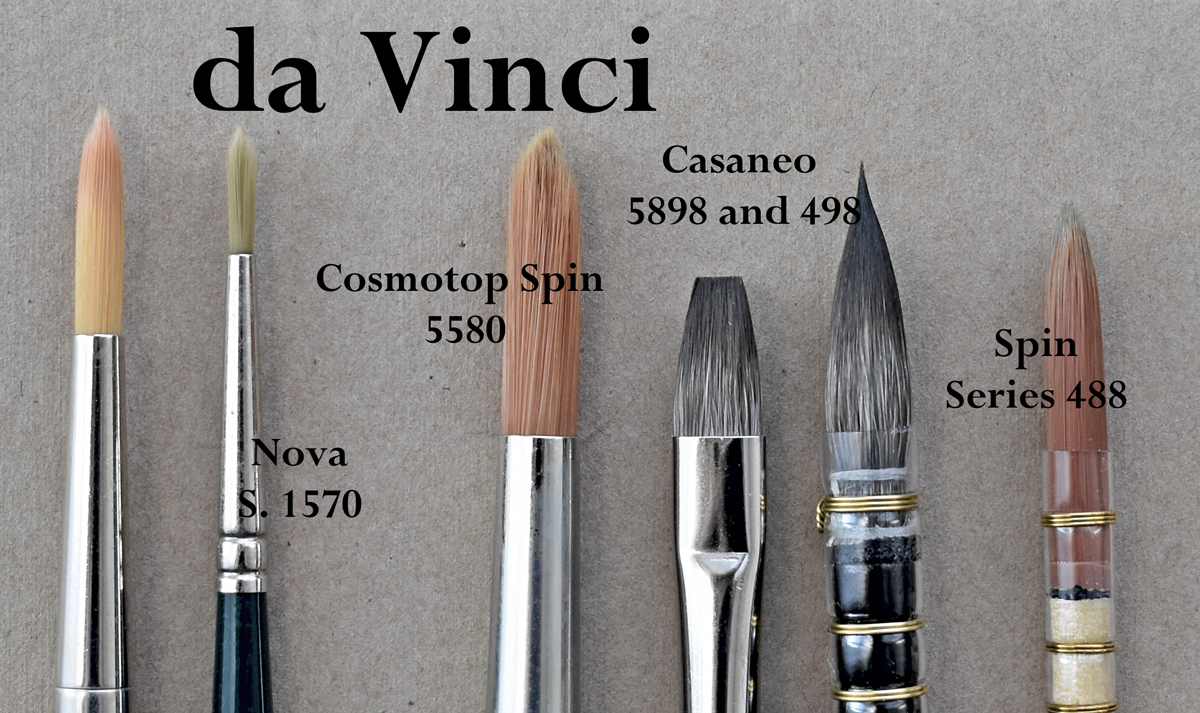Vegan alternatives for painters

Categories
My thanks to Jackson’s art blog jacksonsart.com for this piece I wanted to share with you:-
The Vegan Watercolourist
For a lot of people, being a vegan is not only a way of eating, it is also a way of living. Eating exclusively plant-based food while using brushes made of real sable hair coming from fur farms wouldn’t make much sense.
While brushes are an obvious example, diverse animal parts can sneak in unobserved in other watercolour materials.
Here are a few watercolourist art materials that are safe for a vegan art practice.
Choosing Vegan Watercolour paints:
Paints need a binder and this can sometimes be made of animal products: Sennelier and Jackson’s use honey, while Schmincke and Winsor & Newton use ox gall. Daniel Smith and QOR watercolours are vegan friendly, as they use synthetic binders. They also both use a high concentration of pigment, which produces bright, saturated colours.
Even if the binder is vegan, keep in mind that the pigments might not be. Bone Black is made of charred bones so any colour that has the pigment Pbk9 in its formula contains animal bones. Genuine Sepia is made from squid ink and Indian Ink from crushes bugs. Thankfully, a lot of animal derived pigments such as Scarlet and Indian Yellow are now obsolete and have been replaced with modern, more reliable and animal-friendly pigments.
Choosing Vegan Watercolour Paper:
Watercolour papers are made of rag, cotton or sometimes wood pulp. The best quality papers are pure cotton. The animal product element comes with the sizing. To give them resistance to washes, papers are sized internally and usually externally with a glue that can be made of animal gelatine. Saunders Waterford and Arches both fall into this category. Fabriano on the other hand, stopped using animal gelatine a long time ago and all their papers are now vegan friendly. Canson Heritage, Stonehenge Aqua, and Canson Moulin du Roy use vegetable or synthetic sizing.
Choosing Vegan Brushes:
Like their real fur counterparts, synthetic brushes come in a variety of styles and cater for all artists, from the soft touch painters to those who prefer a stiffer brush. The quality of the bristles is now just as good as the real sables and they give a wider range of texture and spring.
Soft Vegan Watercolour Brushes
If you like a very soft brush that caresses the paper, try da Vinci casaneo Series 5598, Jackson’s Studio Synthetic series 505 and Escoda Versatil.
Another stunning one is the Princeton Neptune. When I first tried it, I thought that there had been a mistake and that I had been sent a natural hair paintbrush instead of a synthetic. If you are a fan of translucent glazes, the Neptune will float above the previous washes without disturbing them in the slightest.
If you prefer medium texture with a good spring, ProArte Prolene + series 007 is a great brush. It is well balanced in the hand and responds well to gentle pushes, bouncing back in shape while giving you control in wet-in-wet washes. The da Vinci Cosmotop and Jackson’s Onyx are also springy without being scratchy.
Strong, stiffer Vegan Watercolour Brushes
If you like a strong, stiffer brush that can lift washes and give more control, the da Vinci Nova and Jackson’s Artica Toray have firm and less absorbent bristles.
If you are partial to a quill brush, try da Vinci Casaneo 498, Jackson’s Raven 528 or da Vinci Spin synthetics 488.
This should allow you to make yourselves an animal-friendly kit for your art practice. I am preparing a series of videos on my YouTube channel in which I will test the brushes mentioned in this post. You will be able to watch as I use them and comment on their performance.
In the meanwhile, happy Veganuary and happy painting!
Sandrine Maugy
Sandrine Maugy is a well known botanical painter and a regular contributor of articles to the Artists & Illustrators Magazine, she has also published a beautifully illustrated Botanical Painting book on advanced colour-mixing theory and painting wet-in-wet when watercolour painting. She runs a very informative blog and an exciting, inspiring YouTube which is worth regularly checking for new advice and tips.
Visit her website and her Instagram @sandrinemaugy to see more of her work and find out about her practice. Also, don’t forget to subscribe to Sandrine’s YouTube channel, if you want to see her upcoming series of videos.



